The Cancer Lottery
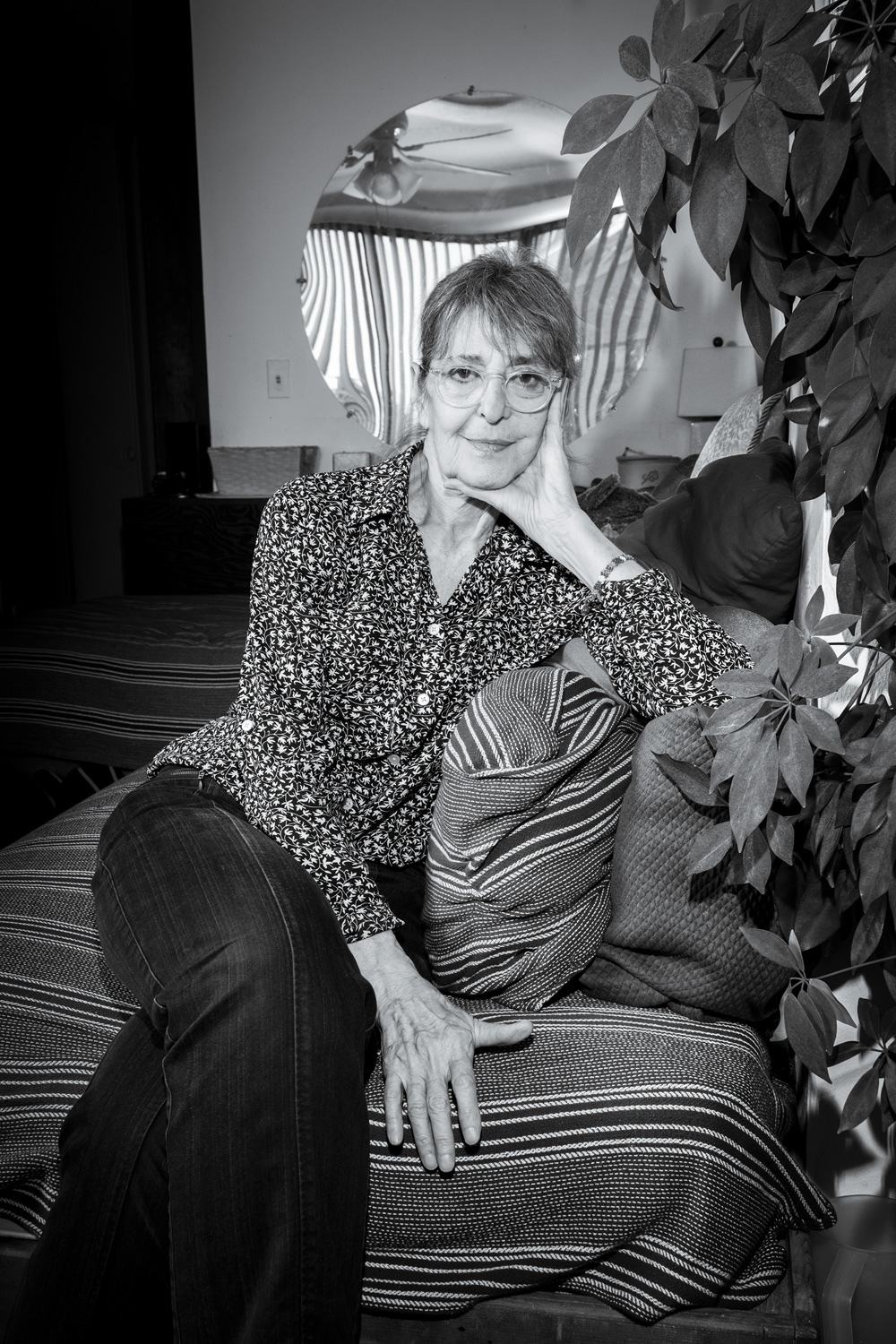
In her 30-year battle with breast cancer, Carmen Teixidor thought she had experienced every treatment doctors could hurl at the disease. She had endured multiple bouts of radiation and multiple courses of hormone therapy. She tried chemotherapy once, about 25 years ago, but it diminished the quality of her life so much that she’s tried to avoid it ever since. She had multiple surgeries, too, and she developed a dread of the moment when she came out of anesthesia and into consciousness, almost inevitably to hear bad news. That is how she first learned, in the summer of 1985, that after doctors had found a large tumor in her left breast they had felt compelled to perform a mastectomy.
“Absolute terror,” she recalls, staring down at the floor of her New York apartment. There’s never a good time for a cancer diagnosis, but for Teixidor, it came just as her career as an artist had begun to take off—two of her life-size sculptures had been acquired for the grounds of Rockefeller University, and she had recently completed a mural at Harlem Hospital. A slender woman now in her 70s, graying hair gathered in a youthful ponytail, she has dealt with one recurrence after another, submitting to medical tools from the scalpel to, most recently and perhaps most improbably, the molecule.
Teixidor barely noticed when, in the fall of 2013, her doctors at Memorial Sloan Kettering Cancer Center in New York analyzed a small snippet of her tumor and sequenced the DNA in her cancer cells. They did this, as an increasing number of academic cancer centers are doing, to look for telltale mutations that might drive malignant growth. Certain of these mutations are the targets of a new generation of specially designed drugs.
As it turned out, Teixidor’s tumor indeed possessed several medically interesting mutations. But there was a catch: no existing drug was targeted to hers in particular. In the fall of 2013 that wasn’t particularly worrisome, because her cancer, despite many recurrences, seemed to be under control. And then everything changed.

“Two years ago,” she says, “there was a very bad recurrence.” She could feel tumors poking out from the back of her skull. Another tumor took root in her jaw. There were tumors in her neck, and scans revealed more in her bones and pelvis. It was a new, and ominous, phase of the disease that has shadowed her for so long. But when her oncologist at Memorial Sloan Kettering Cancer Center in New York recommended a course of chemotherapy, Teixidor refused. “I got very depressed by the idea that I had to choose between nothing and chemotherapy,” she admits.
As Teixidor’s cancer had changed, however, so too had the science. One of the mutations in her tumors now matched the target of an experimental drug being tested at Sloan Kettering and elsewhere. Even as an academic debate raged over the value of precision medicine in cancer (one recent scientific critique described it as “the precision oncology illusion”), Teixidor enrolled in the clinical trial, and she began taking the drug in the late summer of 2015. Within weeks, she could feel her tumors regressing—and imaging scans subsequently confirmed that they had.
Remarkable though results like hers have been, questions about precision oncology vex doctors, scientists, health insurance companies, and the more than 1.6 million Americans who will receive a cancer diagnosis this year. How many patients might benefit from DNA sequencing of their tumors? Who will have access to this medical approach, which is exceptionally expensive? How much is society willing to pay for the small subset of patients who might
benefit?
FINDING TARGETS
Ever since the Human Genome Project, scientists have dreamed of using precise, personal molecular information to guide the diagnosis and treatment of human disease. The vision is simple: knowing the DNA sequence of people with particular diseases should reveal the mutations producing those illnesses and offer enticing targets for drugs designed to attack them. Unfortunately, biological complexity still far exceeds medical knowledge. Though researchers hoped that a limited number of common mutations would explain a broad swath of human illness—heart disease, high blood pressure, diabetes, schizophrenia—that has largely failed to hold true.
As Teixidor’s cancer had changed, so too had the science.
Cancer treatment is a bright spot in this disappointing story, however. Tumors typically do display genetic aberrations that offer potential targets for drugs. Long before there was widespread talk about precision oncology, targeted therapy had become a major player in cancer clinics. In 1998, the Food and Drug Administration approved a drug for a subset of breast cancer patients whose tumor cells displayed a particularly hyperactive version of a surface molecule known as the HER-2 receptor. Herceptin was the first targeted cancer treatment, and it was joined by two other blockbuster drugs, Gleevec (which targeted a mutation in a form of leukemia) in 2001 and Zelboraf (which targeted a mutation in melanoma) in 2011.
The success of these drugs gave rise to the hope that with DNA sequencing becoming relatively cheap and accessible, the genome of any tumor could be mined for clues about how to directly attack its specific mutations. That, in a nutshell, is the animating idea behind precision oncology: doctors could biopsy a tumor, analyze its DNA sequence, and identify mutations—some of which would render the cancer vulnerable to already approved molecular medicines. Where doctors once struggled to treat “breast cancer” or “skin cancer,” the mutation, not the tissue of origin, would become the disease’s fundamental defining characteristic.
It sounds almost irresistible. But researchers who hoped to find that every cancer has a genetic Achilles’ heel have discovered that the biology of cancer mutations is far more complicated. In fact, one of Carmen Teixidor’s doctors has been at the forefront of demonstrating just how complicated it is.
BASKET CASE
In April 2012, doctors at 15 leading cancer centers in the U.S. and Europe began enrolling patients in one of the first big clinical trials to test a basic premise of precision medicine in cancer. The study built on knowledge developed over the previous decade showing that half of all patients with melanoma, the deadly skin cancer, possessed a particular genetic alteration in a gene called BRAF. This mutation made melanoma cells vulnerable to Zelboraf. The drug was not a cure, and was not even effective in every patient, but in some patients it temporarily halted the spread of this highly malignant cancer. David Hyman, one of Teixidor’s physicians at Sloan Kettering, led an international team of researchers who looked for the same mutation in cancers other than melanoma. They wanted to create a “basket” of patients—individuals who possessed the mutation, regardless of the kind of cancer—and then treat them with the drug.
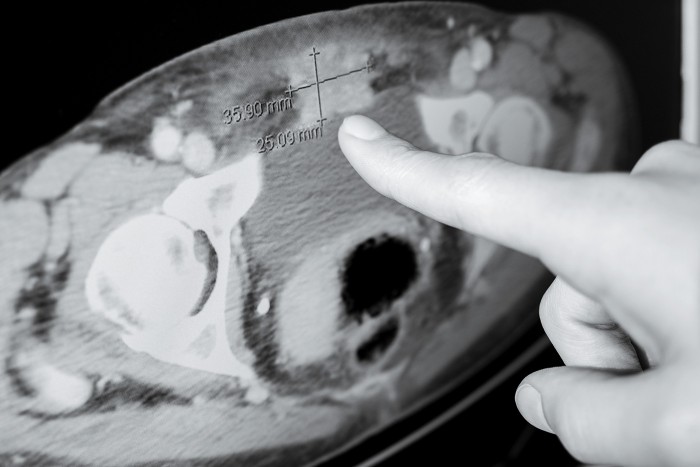
The results of that study, published in the New England Journal of Medicine in August 2015, both encouraged and cautioned the oncology community. Hyman and his colleagues identified patients with the BRAF mutation who had lung cancer, colon cancer, thyroid cancer, and other forms of the disease. In some cases, the drug worked; in other cases, somewhat surprisingly, it didn’t. In people with non-small-cell lung cancer, for example, more than 40 percent found that the drug slowed the progression of their disease. But in colon cancer patients who possessed the identical mutation, the drug had no effect at all.

The mixed message troubled oncologists like Michael Kolodziej, national director of managed care strategy for Flatiron Health, a data analysis company that is trying to sift messages from electronic health records. “Realistically, for a lot of patients, this is not going to be helpful to them,” he says. “For others, it might be the single most important thing you could do. And I can’t tell one from the other right now.”
Quandaries like this abound. Most of the mutations found in cancers are exceedingly rare, and the medical significance of many of them is murky. Some mutations are treatable; others are not, or at least not yet. Moreover, the treatments have not been uniformly successful. A subset of patients respond, but the responses are typically short-lived; many people do not respond at all.
Researchers are now trying to find out why. Around the same time that Hyman and his colleagues published their results in the summer of 2015, the National Cancer Institute launched a large and ambitious study to rigorously test the idea of matching a specific mutation, in any kind of cancer, with an appropriate targeted therapy. The ongoing study involves 24 different subprotocols, each looking at molecular changes in a specific pathway targeted by the drugs. It involves more than 3,000 patients. NCI arranges for their tumors to be sequenced, and when researchers identify a match—about 22 percent of the time, as of October—it sends the appropriate drug directly to the cancer center treating the patient.
“I think we will figure this out. But it’s not a slam dunk.”
Barbara Conley, at NCI, believes that some of the skepticism about precision oncology is warranted. “I think we will eventually figure it out,” she says. “But it’s not a slam dunk.” Hyman doesn’t disagree. But he points out that as more tumors get sequenced, and more targeted drugs are developed and tested, precision oncology is rapidly improving. A patient in the right place at the right time might find that a mutation that is not “therapeutically relevant” one day is treatable the next. And with a tap on his keyboard, Hyman can now find any patient in Sloan Kettering’s system who possesses any particular mutation.
LOTTERY WINNER
In the spring of 2013, Carmen Teixidor had a tumor biopsy, but when researchers at Sloan Kettering looked for common sites of cancer mutations (known as hot spots), the sequencing test didn’t work. They repeated the test the following October, and this time the results showed that Teixidor’s tumor DNA had several mutations, including one in a gene called AKT1. Unfortunately, there was no treatment for it at the time—the mutation was not, in the lingo of precision medicine, “actionable.” Like other patients at Sloan Kettering, however, she had her tumor DNA data entered into a database accessible to the lead researcher of any clinical trial at the hospital who planned to test a drug against any of her mutations.
The AKT mutation was first identified as a cause of cancer in 2006, and several drug companies developed AKT inhibitors. Initial trials in the general population of cancer patients were “largely unsuccessful,” Hyman says, but matching the drug to patients with the vulnerable mutation might improve the odds of a response. One of the companies working on AKT inhibitors was AstraZeneca, and the company provided an experimental drug called AZD5363 for a clinical trial at Sloan Kettering and elsewhere. When Hyman embarked on the targeted AKT trial in 2014, Carmen Teixidor’s name popped up on his computer screen. “With the advance of the field, we kind of caught up with her,” Hyman says.

In September of 2015, Teixidor began to take pills that targeted the AKT mutation present in her rapidly spreading cancer. At first, she experienced debilitating side effects, so her doctors adjusted the dose. After that, her response was so swift that the effects were literally palpable. “We had positive results almost immediately,” she says. After several weeks of treatment, she recalls, she could no longer feel her tumors: “They disappeared.” Hyman adds, “That’s pretty typical of what we see when a targeted therapy works. It works very quickly.”
Barely two months later, researchers presented preliminary results from the AKT trial at a meeting of the American Association for Cancer Research. The message from the interim analysis, according to Hyman: “The majority of patients have had some degree of tumor regression on this therapy.” Teixidor’s response, he added, “has been particularly long lasting,” and her doctors are now poring over the DNA sequence of her tumor cells for clues to why her cancer has been especially sensitive to the treatment.
On a recent visit to Hyman’s group at Sloan Kettering, Teixidor posed a question that few patients had raised about the experimental drug. “I asked about long-term side effects,” she said. The answer: no one really knows.
WORTH IT?
Teixidor was lucky to be treated at a major academic center. Not every cancer center is positioned to take advantage of the latest advances in tumor genomics—an inequity recently acknowledged by officials of President Obama’s Cancer Moonshot project. “The vast majority of Americans do not have easy access to precision cancer testing,” they noted in a report issued in September, “since oncology clinical trials are offered mainly at large academic cancer centers and not at community cancer centers where most cancer patients receive their treatments.”
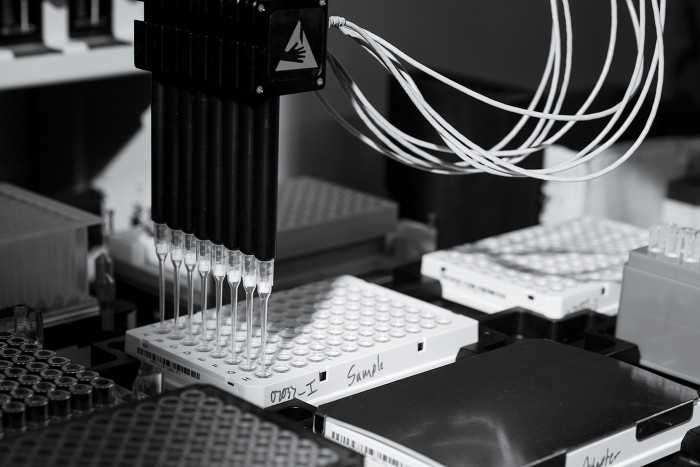
Indeed, sequencing of tumors remains a relatively uncommon practice. Harold Varmus, a former NIH director and now a professor at Weill Cornell Medical College, says one of the big “lost opportunities” in cancer genomics is how few patients are having it done. Medicare does not cover this type of DNA sequencing, and neither do most health insurers. The cost is not insignificant: tumor sequencing can run from $600 to $1,000 per biopsy, depending on who is doing it. But Varmus points out that it’s already cheaper than some standard features of cancer care, such as multiple imaging tests. “These cancer patients end up having dozens of imaging scans—CT scans, PET scans, MRIs,” he says. Each of those tests typically costs $500 to $5,000.
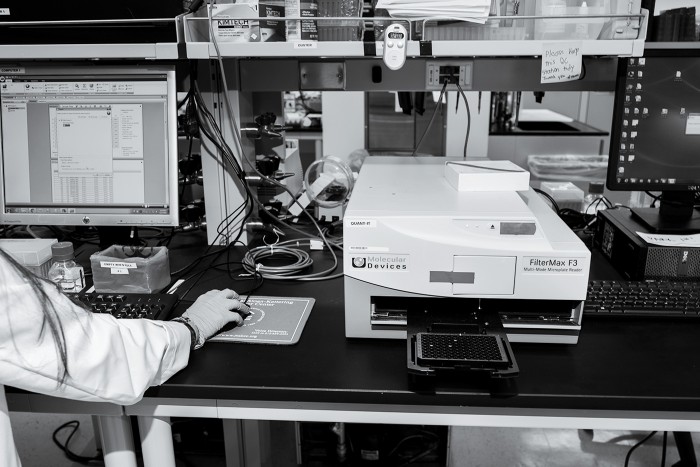
The cost of sequencing is just part of the reason precision cancer medicine is expensive, however. Targeted therapies can easily cost $10,000 a month. Insurance companies don’t always cover them, given the uncertainty over how many patients are likely to benefit.
Vinay Prasad, an oncologist at the Oregon Health and Science University in Portland, recently calculated that only 1.5 percent of patients with recurrent, untreatable solid tumors would be likely to benefit from targeted therapies—which for many would extend their survival by only a few months. Despite the “hype” surrounding rare cases where patients respond dramatically, he wrote in Nature, “most people with cancer do not benefit from the precision strategy.” Another oncologist, Howard West of the Swedish Cancer Institute in Seattle, questions the way researchers celebrate “the few successes” without “discussing the denominator of all the patients treated in order to achieve those successes.” He adds, “Yes, there are a few winners. But it’s just like a lottery. Is it worth spending millions of dollars on testing to find the four patients you wouldn’t have found otherwise?”
These criticisms mystify researchers like Razelle Kurzrock, of the Moores Cancer Center at the University of California, San Diego. Kurzrock and her colleagues recently analyzed the results from hundreds of clinical trials and argue that when targeted drugs were properly matched to specific tumor mutations, patients exhibited significantly increased response rates and progression-free survival, a measure of the time before a cancer recommences its spread. “Clearly,” she says, “there is a large majority of types of cancer that respond.”
Her research, first at MD Anderson Cancer Center in Houston and now at UCSD, suggests that patients are already benefiting from next-generation sequencing and matched drugs. “You can get phenomenal responses,” she says, adding that response rates have increased even more when doctors use combinations of targeted therapies.
The hope is that once more data is in place, an increasing number of cancer patients will be helped. Hyman cites a genetic alteration that appears in roughly 1 percent of lung cancer patients. Last March, the FDA approved a drug that has “dramatically” extended the lives of these patients, according to Hyman. Not to look for that mutation in the 225,000 Americans diagnosed with lung cancer each year, he says, would be tantamount to rationing health care.
Teixidor’s doctors are poring over the DNA sequence for clues.
“We can’t walk away from this,” he says. “Even if it doesn’t affect 100 percent of patients, even if it affects 1 percent or 5 percent or 10 percent—that’s enough.”
Whatever the percentages, Carmen Teixidor has been grateful. On a recent Wednesday afternoon, she sat at her computer, riffling through digital files brimming with her art. One current series of works, she explained, begins with tightly focused, one-inch-square photographs of her own skin; she then changes the initial images—“wrinkles and all”—by mirroring and digitally manipulating them to create stunning fabrics and fantastic three-dimensional shapes such as vases and flowers.
During that conversation, she remarked that living with cancer for so long had been a form of liberation. “What’s life,” she asked, “if you can’t feel its edge?” This past November, however, doctors told her that her cancer had begun to grow again, making her future a little more uncertain. “Right now,” she says with a rueful laugh, “I’d prefer not to feel it.”
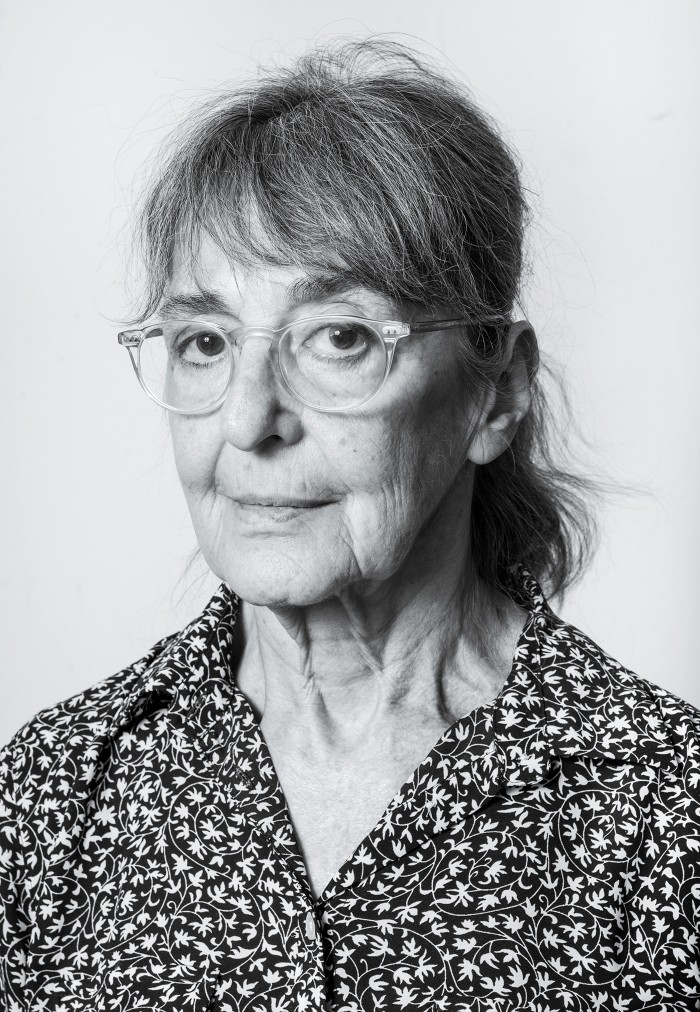
Stephen S. Hall, a science writer based in New York, teaches science communication and journalism at New York University.
Keep Reading
Most Popular
Large language models can do jaw-dropping things. But nobody knows exactly why.
And that's a problem. Figuring it out is one of the biggest scientific puzzles of our time and a crucial step towards controlling more powerful future models.
The problem with plug-in hybrids? Their drivers.
Plug-in hybrids are often sold as a transition to EVs, but new data from Europe shows we’re still underestimating the emissions they produce.
Google DeepMind’s new generative model makes Super Mario–like games from scratch
Genie learns how to control games by watching hours and hours of video. It could help train next-gen robots too.
How scientists traced a mysterious covid case back to six toilets
When wastewater surveillance turns into a hunt for a single infected individual, the ethics get tricky.
Stay connected
Get the latest updates from
MIT Technology Review
Discover special offers, top stories, upcoming events, and more.